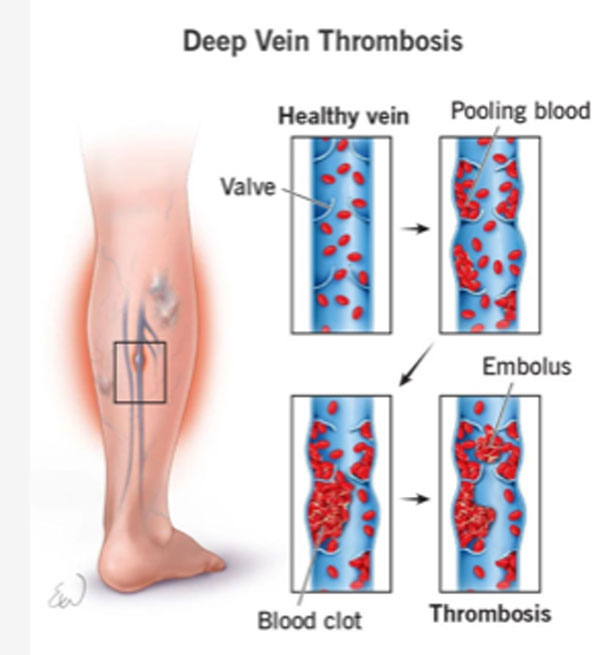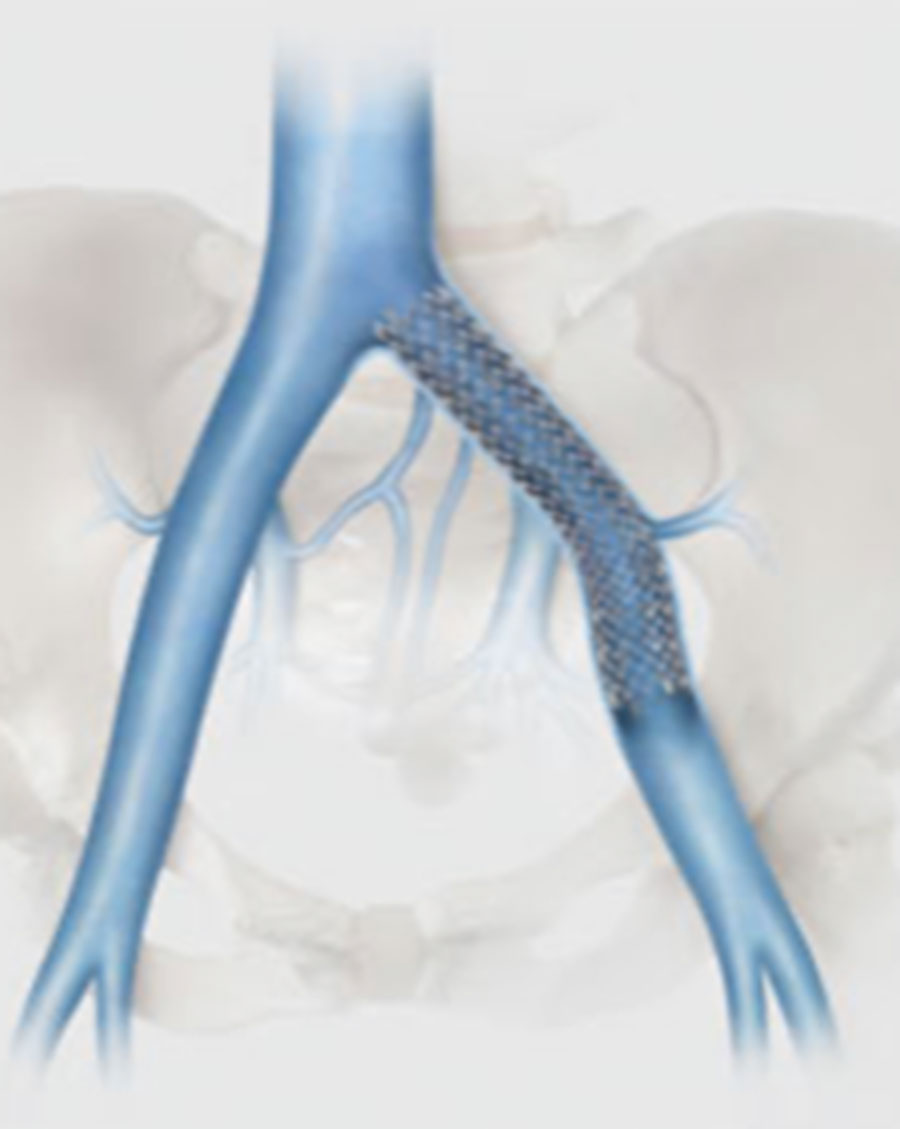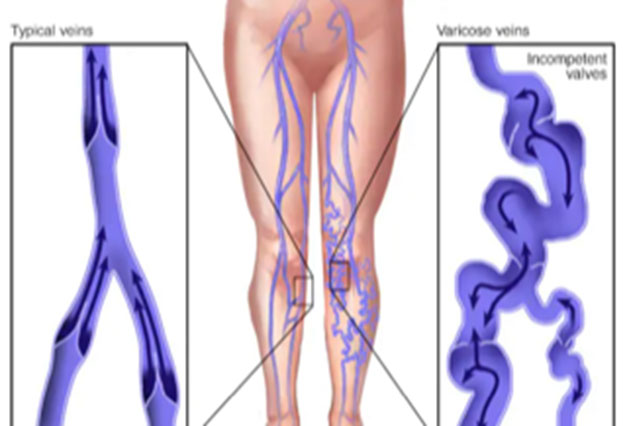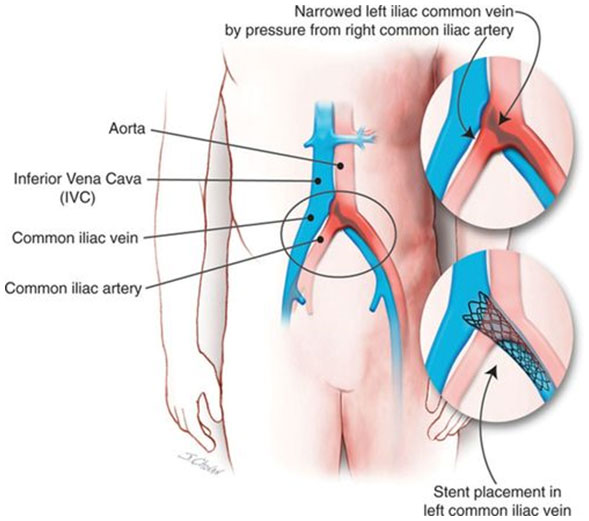Venous Procedures
Deep Vein Thrombosis (DVT)
Deep vein thrombosis (DVT) is a medical condition that occurs when a blood clot forms in a deep vein. These clots usually develop in the lower leg, thigh, or pelvis, but they can also occur in the arm.
Signs of Deep Vein Thrombosis
People with DVT may not have symptoms. Among those who do, the following symptoms can occur in one or both legs:
- Swelling
- Pain or tenderness, possibly only when standing or walking
- Red or discolored skin on the affected area
- Increased warmth in the affected area
Deep Vein Thrombosis Risk Factors
- Injury to a vein, often caused by major surgery, fractures or muscle injury
- Slow blood flow as a result of bed rest, paralysis or sitting for a long time while traveling
- Smoking
- Obesity
- Family history of blood clots
- Estrogen or hormonal therapy
- Cancer

Treatments for DVT
Oral anticoagulants, also known as blood thinners, are the standard treatment for DVT. These may prevent new clots from forming by reducing your body’s ability to clot. However, you may still feel the symptoms due to existing clot.
Compression stockings are also recommended as part of standard treatment. These are prescribed to help reduce leg pain and swelling.
Mechanical thrombectomy is type of minimally-invasive procedure in which a licensed physician uses specialized equipment to remove a clot from a patient's vein. Using fluoroscopy, or continuous x-ray, the doctor guides instruments through the patient's arteries to the clot, extracting the clot all at once.
Venous stents are metal mesh tubes that expand against blocked or narrowed vein walls. They act as a scaffold to keep veins open. In most cases, surgeons place venous stents in larger, central veins, such as those found in the Legs.

Varicose Veins
What is the main cause of varicose veins?
Varicose veins are usually caused by weak vein walls and valves. Inside your veins are tiny one-way valves that open to let the blood through, and then close to prevent it flowing backwards. Sometimes the walls of the veins become stretched and lose their elasticity, causing the valves to weaken.
VenaSeal uses a medical glue to close affected veins. This special glue holds the walls of the vein together, stopping and then redirecting the blood flow to healthy veins. With time, your body will absorb the inactive veins, and they will disappear.
Sclerotherapy involves injecting a solution directly into the vein. The sclerotherapy solution causes the vein to scar, forcing blood to reroute through healthier veins. The collapsed vein is reabsorbed into local tissue and eventually fades

May-Thurner Syndrome
May-Thurner Syndrome is a rare vascular condition that affects a vein in your pelvis. It occurs when a nearby artery compresses the left iliac vein. This vein brings blood from your pelvis and legs back up to your heart. The compression prevents blood from flowing properly, leading to narrowing and scarring.
